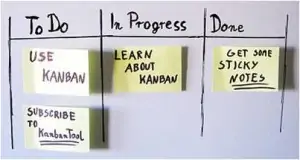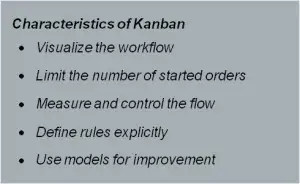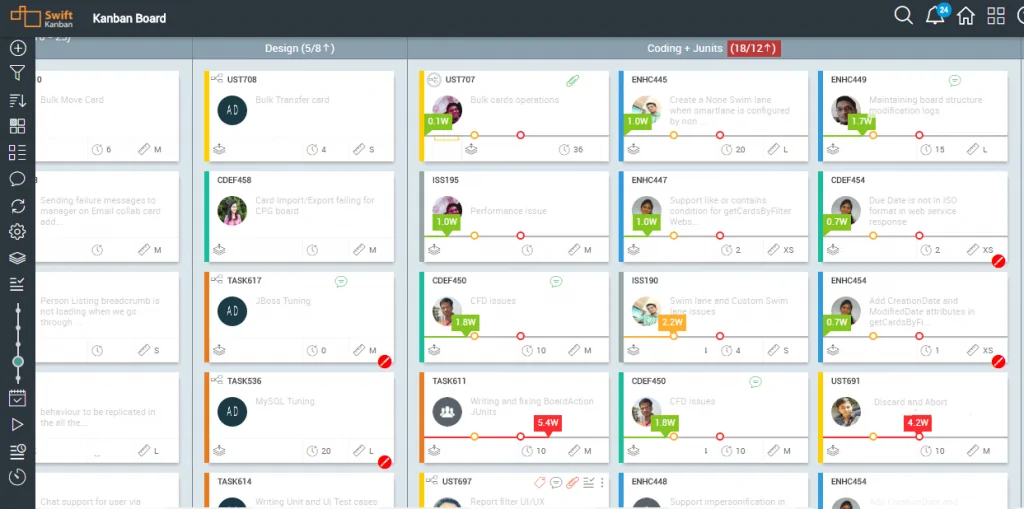Most projects and business activity have a ‘flow’ or a ‘process’, comprising adjacent steps or phases, to produce a product or to deliver a service, to internal customers or external customers. Kanban is the way many teams and organizations visualize their work, identify and eliminate bottlenecks and achieve dramatic operational improvements. Kanban is an evolutionary approach to change and improvement irrespective of the method or framework currently in use.
SwiftKanban honours this philosophy of Kanban, enabling Lean improvement approach while completely supporting Scrum. But enough said, nothing better than a real life success story!
We are honored to publish another guest blog-post, this time by Florian Boldt, Department Head in Wincor-Nixdorf Portavis, a SwiftKanban customer and a satisfied user! We hope you enjoy this real-life experience story.
Kanban, successfully used in the automotive industry since the 1950s, has found its way into IT via lean  production and agile software development. There, among other things, used as a visualization aid in the context of Scrum and Xtreme programming, it has found itself increasingly used in IT Operations.
production and agile software development. There, among other things, used as a visualization aid in the context of Scrum and Xtreme programming, it has found itself increasingly used in IT Operations.
Wincor Nixdorf Portavis has piloted its use for handling support ticket/ orders in database management for its North German clients – and since the introduction about 6 months ago, it has exceeded its expectations.

“We wanted to create transparency within the team about the order status and processing, and especially to remove blockers, which affect the fluid processing of orders. Elimination of blockers is often the responsibility of management”, as per H. J. Drechsel, Head of Database Operations
The work must flow through the system and be visualized accordingly. One key to fluid order processing is the reduction of too much simultaneous (or part thereof) work and the transparency of the entire burden of a team. Orders here can be fault processing, consulting, project work, analysis or support in the bidding process. The simultaneous processing of many tasks and their disruption leads to waste, e.g. ‘setup time’ that hinders the overall throughput and especially exposes colleagues to unnecessary stress.
An IT operation is planned and managed differently from software development. The operation is highly disruption driven, daily receiving new urgent and important tasks within the team, often leading to an increased pressure for reduction of lead time. A fast weighing (triage) and associated prioritization is crucial in order not to interrupt work that has already begun. Team members can often help decide which task has priority over the other and how an order assignment works best within the teams. The executives supplement knowledge about prioritization and scheduling commitments and fit with the team’s execution order accordingly.
These requirements led the colleagues to a production process control, which has a lot more to offer than a mere visualization: a Kanban Board.
Since the introduction of the method and acquisition of suitable tools (SwiftKanban), the team members have complete visibility of who edited what order and in what state. The jobs are not pushed onto the team (push method), but instead taken by the team (pull method). Work may only be “pulled” if there is still free space for it (work-in-progress limits) and the new task is prepared for processing (ready for work) and is prioritized and scheduled. So work to be pulled comes in clean into the system.
The way of how the changes were introduced, based on a “If it does not help, then we won’t do it” principle, was well-prepared but not within the framework of a project and helped create a positive working environment from the start. Everyone from the administrators to the Heads of Departments has taken part in this.
Intermediate standings after 6 months:
- – Complete order visibility for the team
- – Supports self-organization and also serves to promote the team
- – Ongoing process adaptation is possible
- – The coordination within the team as well as between the team and the executives has been improved
- – The team has expressly more decision-making competency
- – The team satisfaction (within and throughout the system) has increased
- – The order cycle times (lead time/ cycle time) has reduced by an average of 60%
- – The job processing is in statistical control (Variance decreased significantly: before between 1-110 days; and today between 1-22 days, upper limit is still decreasing)
We believe this a sustainable, simply introduced method we have found that both strengthens and supports the team, and provides a platform to improve the flow of work continually.
Florian Boldt
Department Head in WN Portavis
If you liked the post, please don’t forget to share it! If you’d like to try SwiftKanban for your IT and DevOps teams, you can do that risk-free right here!










